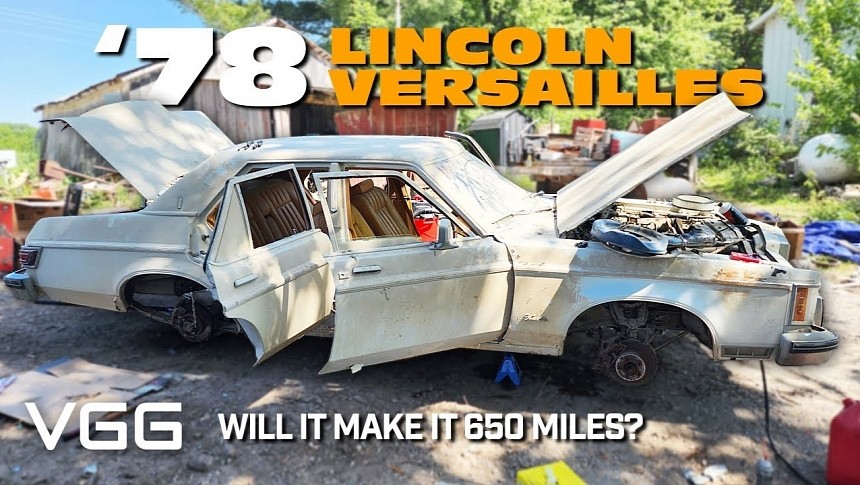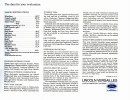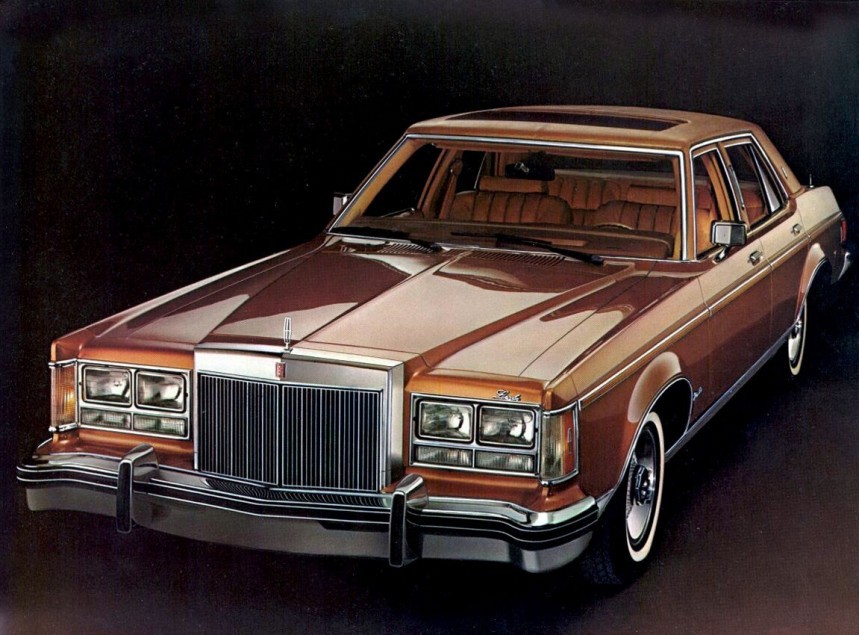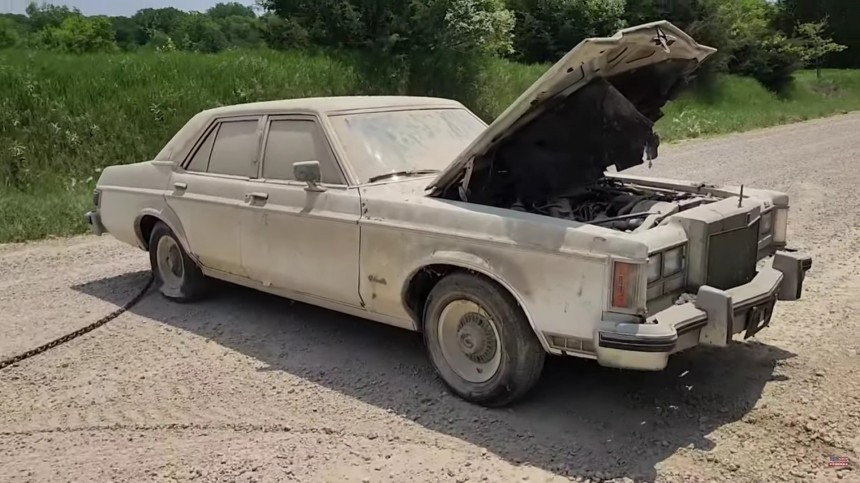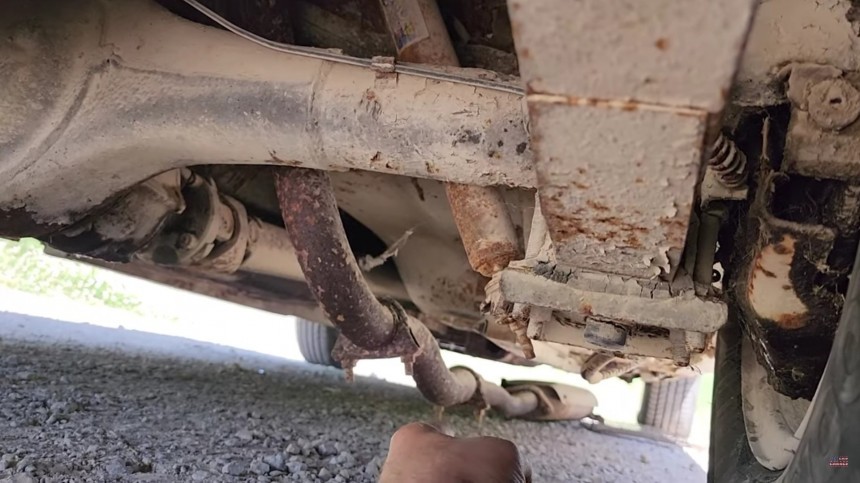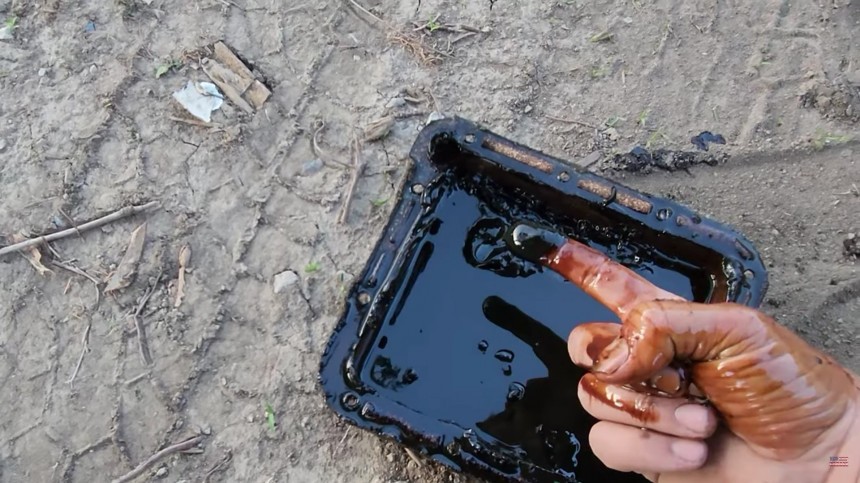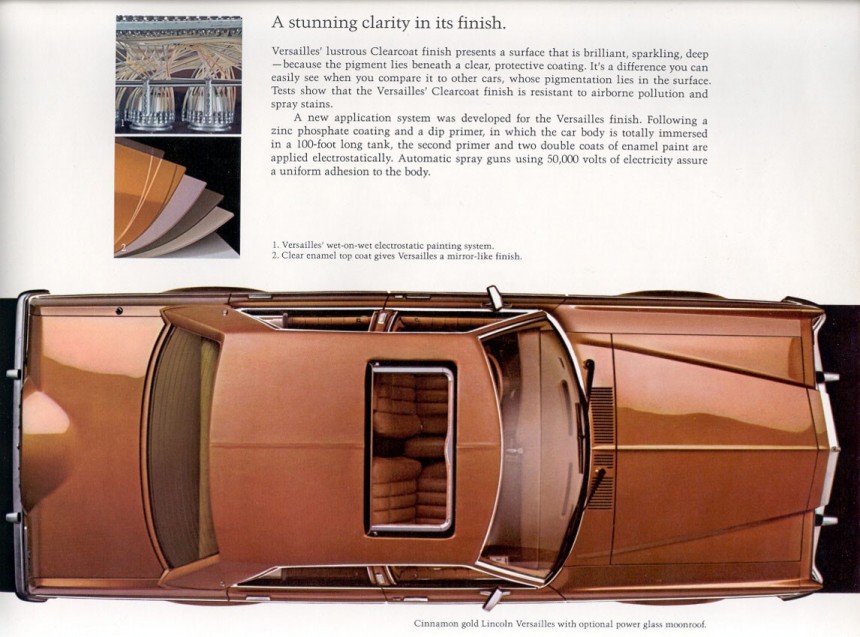While the oil crisis was in full swing, in the mid-70s, Detroit got the idea that squeezing luxury cars to overall mid-size dimensions would absolutely skyrocket sales. And, wouldn’t you know it, it did – for Cadillac, who established the new segment with their Seville model, launched in 1975. Ford was hot on GM’s heels to follow suit and introduced the Lincoln Versailles in 1977.
Putting a European-sounding nameplate on a car doesn’t automatically make it a superior automobile – even though it worked for Cadillac. The Seville sold well during the five year-production run of the first generation (1975-1979), despite being the most expensive non-limousine Cadillac model.
Across the road, things weren’t going just as lovely – FoMoCo thought it struck gold when the Seville rival, the gloriously-named Lincoln Versailles, hit the showrooms. Despite the Blue Oval’s best efforts to market it as “the most personal luxury car ever,” its Ford Granada underpinnings were more than evident to buyers.
According to Ford sales clerks, the majority of Versailles were purchased by older Lincoln owners who didn’t want aircraft-carrier-sized automobiles anymore. On the other hand, Ford’s mechanics were more honest and down to Earth in their assessments of the newly introduced 1977 Lincoln.
Some called it a glorified Granada (on which it was based, along with the Mercury Monarch) or an LTD with a fancy grille and claimed the only good thing in them was the 302 V8 engine. There are radicals – or Ford contesters – who say it was a worse car than the same year Fairmont.
Whatever the arguments thrown at it might be, the Versailles never lived up to its eponymically famous French luxury. The car wasn't appealing to buyers despite having nearly all possible options offered as standard.
So it’s no surprise they’re not around in heaps anymore, nor do collectors come in running when one pops up for sale. As for a barn find rescue – that’s one for Ford fanatics or car rescue vloggers to grab, as it happened to one particular example from Iowa.
Retired on the block of long-time storage (an “I’ll fix this… one-day” type of no-deadline-postponement) sometime in 2000, this 1978 Lincoln Versailles has collected dust ever since. It also served as a residential complex for mice and other vermin, even though it was left with the hood up.
A popular belief among rural gearheads is that the rodents won’t nest in sunlit areas. Hence, they prefer to long-time store their old cars with the hood open. While it may be true – especially if there are cats on the property and the felines are active hunters – it doesn’t prevent the pesky pests from choosing other areas of a vehicle.
In this Lincoln’s case – everywhere else, from the cabin (including the glovebox) to the trunk (although it’s unclear how the mice got in the trunk, as there is no sign of a rust-imposed entryway). Speaking of corrosion, the merciless jaws of metal oxidation did not spare the Lincoln. Although it didn’t carve deep, rust is abundant on the rear bumper, fenders, doors, and underside.
Yet, despite the tarnished demeanor of this 45-year-old luxury sedan, the engine is surprisingly smooth, easily turning freely and happily coming back to life (after a mandatory revival of the carburetor, distributor, and fuel pump).
Sure, the belts are worn beyond breaking point – one of them, from the alternator, actually snaps on video – and the fuel pickup line is clogged. Nothing four days of work won’t fix – if the guy doing the wrench-turning part is Derek Bieri from Vice Grip Garage YouTube channel.
The transmission is the worst-looking part of this scared and bruised (but otherwise road-worthy) Ford Motor Company automobile. The three-speed gearbox somehow turned its lubricant into a mushy compound with a pudding-like consistency. Nothing a quick transmission cleaning fluid treatment can’t fix, immediately transforming the Versailles from a four-neutral-gears automobile into a driver.
Not just any driver, mind you – the salver took it on a 650-mile road trip from Iowa to southern Tennessee (after fixing everything necessary, minus the rear disc brakes). The last detail didn’t bother the YouTuber much – with the front brakes in approximate working order, the car is good to go, averaging 16 mpg (14.7 liters/100 km) over the 650-mile trip (roughly 1,050 kilometers).
The old Ford mechanics lauding the venerable 302 cubic-inch V8 motor (5.0-liter) knew what they were talking about. The ancient eight-cylinder small-block still rumbles joyously, and it probably still has a good many of the original 133 horsepowers left in it. As for torque, the 243 lb-ft (329 Nm) – is available at 1600 RPM! – have no trouble pulling the 1.8-ton Lincoln on the highway.
With all of Ford’s marketing efforts, the Versailles was a sales flop, totaling just over 50,000 units for the four-year production run. For comparison, Cadillac’s Seville outsold the Lincoln almost four-to-one during that time. Moreover, the GM automobile surpassed the 50,000-unit mark in 1979 and 1980 (the Versailles managed less than 25,000 combined in its last two years).
It might have been that the Versailles was much too similar to its Granada and Monarch siblings that veered buyers away from it. The posh Lincoln – priced at around $11,000 when new – offered many luxury features, from power seats, power windows, and power locks (all work on this particular example, by the way), to the leather interior, ice-cold air conditioning (which also works, blowing 52° F / 11° C inside the cabin), or cruise control (again, in working order here).
Lincoln wanted to attract buyers by using the same techniques applied by European luxury carmakers – like Rolls-Royce – and introducing customized engineering for the Versailles. For example, the engines, torque converters, and gearboxes were uniquely matched (and color-coded) to eliminate as much vibration as possible. The rear axle shafts and brake rotors were matched with the wheels and tires for a smooth ride.
And yet, despite its many innovations, the Lincoln mid-size personal luxury car (sitting on a 110-inch wheelbase / 2,794 mm) was about as fashionable as putting lipstick on a pig. It introduced halogen headlamps and electrostatically-applied clear coat to the American public. Still, it lacked the distinctiveness to set it apart from the lesser marques of Ford and Mercury. It was quietly retired at the end of 1980, and Ford never resurrected the nameplate.
Across the road, things weren’t going just as lovely – FoMoCo thought it struck gold when the Seville rival, the gloriously-named Lincoln Versailles, hit the showrooms. Despite the Blue Oval’s best efforts to market it as “the most personal luxury car ever,” its Ford Granada underpinnings were more than evident to buyers.
According to Ford sales clerks, the majority of Versailles were purchased by older Lincoln owners who didn’t want aircraft-carrier-sized automobiles anymore. On the other hand, Ford’s mechanics were more honest and down to Earth in their assessments of the newly introduced 1977 Lincoln.
Whatever the arguments thrown at it might be, the Versailles never lived up to its eponymically famous French luxury. The car wasn't appealing to buyers despite having nearly all possible options offered as standard.
So it’s no surprise they’re not around in heaps anymore, nor do collectors come in running when one pops up for sale. As for a barn find rescue – that’s one for Ford fanatics or car rescue vloggers to grab, as it happened to one particular example from Iowa.
A popular belief among rural gearheads is that the rodents won’t nest in sunlit areas. Hence, they prefer to long-time store their old cars with the hood open. While it may be true – especially if there are cats on the property and the felines are active hunters – it doesn’t prevent the pesky pests from choosing other areas of a vehicle.
In this Lincoln’s case – everywhere else, from the cabin (including the glovebox) to the trunk (although it’s unclear how the mice got in the trunk, as there is no sign of a rust-imposed entryway). Speaking of corrosion, the merciless jaws of metal oxidation did not spare the Lincoln. Although it didn’t carve deep, rust is abundant on the rear bumper, fenders, doors, and underside.
Sure, the belts are worn beyond breaking point – one of them, from the alternator, actually snaps on video – and the fuel pickup line is clogged. Nothing four days of work won’t fix – if the guy doing the wrench-turning part is Derek Bieri from Vice Grip Garage YouTube channel.
The transmission is the worst-looking part of this scared and bruised (but otherwise road-worthy) Ford Motor Company automobile. The three-speed gearbox somehow turned its lubricant into a mushy compound with a pudding-like consistency. Nothing a quick transmission cleaning fluid treatment can’t fix, immediately transforming the Versailles from a four-neutral-gears automobile into a driver.
The old Ford mechanics lauding the venerable 302 cubic-inch V8 motor (5.0-liter) knew what they were talking about. The ancient eight-cylinder small-block still rumbles joyously, and it probably still has a good many of the original 133 horsepowers left in it. As for torque, the 243 lb-ft (329 Nm) – is available at 1600 RPM! – have no trouble pulling the 1.8-ton Lincoln on the highway.
With all of Ford’s marketing efforts, the Versailles was a sales flop, totaling just over 50,000 units for the four-year production run. For comparison, Cadillac’s Seville outsold the Lincoln almost four-to-one during that time. Moreover, the GM automobile surpassed the 50,000-unit mark in 1979 and 1980 (the Versailles managed less than 25,000 combined in its last two years).
Lincoln wanted to attract buyers by using the same techniques applied by European luxury carmakers – like Rolls-Royce – and introducing customized engineering for the Versailles. For example, the engines, torque converters, and gearboxes were uniquely matched (and color-coded) to eliminate as much vibration as possible. The rear axle shafts and brake rotors were matched with the wheels and tires for a smooth ride.
And yet, despite its many innovations, the Lincoln mid-size personal luxury car (sitting on a 110-inch wheelbase / 2,794 mm) was about as fashionable as putting lipstick on a pig. It introduced halogen headlamps and electrostatically-applied clear coat to the American public. Still, it lacked the distinctiveness to set it apart from the lesser marques of Ford and Mercury. It was quietly retired at the end of 1980, and Ford never resurrected the nameplate.
